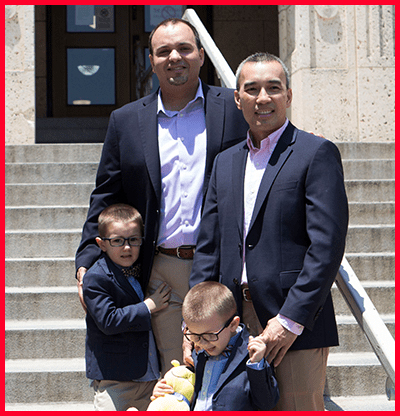The SAFE Alliance
How adoption can make a family feel complete

November is National Adoption Awareness Month. Over the last year, SAFE has had the honor of celebrating 17 adoptions through our Foster & Adopt program. These children, who have all experienced trauma, now have safe and supportive homes. Homes like Mark and Dusty’s.
Mark and Dusty's Story
Mark Simoes and Dusty Nguyen have always known they wanted a family. After nearly 25 years together, they started talking about adoption, and it became clear that this was the path that would make their family complete.
After months of training, home visits, and guidance from SAFE, the couple became foster certified and the waiting period began. When the call came to take in a 10-month old baby, they opened their home to this small child and immediately fell in love.
Mark and Dusty were hoping for the chance to adopt the baby they had come to love, but things changed four months later when the child was reunified with his mother. While the primary goal of foster care is reunification, it can leave foster parents like Mark and Dusty devastated.
After the many days and nights watching their foster child transform in the comfort of a safe and loving home, their bond to this small child had become strong. However, the heartbreak Mark and Dusty felt reaffirmed their decision that adopting a child — or children — was something they deeply wanted.
About seven months later, the couple received the call for another referral for two young boys, Joshua and Caleb. After meeting the siblings and spending a weekend together, they felt an immediate connection that they knew was special. In mid-December, the brothers were flown to Austin and were placed in what would become their forever home.
“We had the best Christmas we could ever hope for,” Dusty said. “The stars seemed to align for us in a way that was just amazing.”
Their case went from placement to adoption in about six months, becoming official July of this year in the presence of numerous friends and family members at an emotional adoption day. Today, the boys are happy and healthy, and the family is looking forward to spending their second holiday season together.
“It’s amazing how getting into a permanent home for them made all the difference,” Dusty said. “We couldn’t be happier. You just have to open your heart and let that lead your way.”


